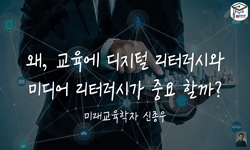본 연구는 2022 개정 초등 사회과 교육과정에 이르러 처음으로 미디어 자체를 가르치는 교육 내용으로 편성된 성취기준을 비판적으로 검토하고, 그에 대한 대안을 모색함으로써 초등 사회과...
http://chineseinput.net/에서 pinyin(병음)방식으로 중국어를 변환할 수 있습니다.
변환된 중국어를 복사하여 사용하시면 됩니다.
- 中文 을 입력하시려면 zhongwen을 입력하시고 space를누르시면됩니다.
- 北京 을 입력하시려면 beijing을 입력하시고 space를 누르시면 됩니다.

초등 사회과에서 미디어 리터러시 교육의 방향 모색: 2022 개정 교육과정을 중심으로 = A Study on the Direction of Media Literacy Education in Elementary Social Studies: Based on the 2022 revised curriculum
한글로보기https://www.riss.kr/link?id=A109528411
- 저자
- 발행기관
- 학술지명
- 권호사항
-
발행연도
2024
-
작성언어
-
- 주제어
-
KDC
300
-
등재정보
KCI등재
-
자료형태
학술저널
-
수록면
41-56(16쪽)
- 제공처
-
0
상세조회 -
0
다운로드
부가정보
국문 초록 (Abstract)
본 연구는 2022 개정 초등 사회과 교육과정에 이르러 처음으로 미디어 자체를 가르치는 교육 내용으로 편성된 성취기준을 비판적으로 검토하고, 그에 대한 대안을 모색함으로써 초등 사회과에서 미디어 리터러시 교육의 방향을 탐색하고자 하였다. 이를 위해 미디어 리터러시 교육에 대한 선행 논의를 종합하여 초등 사회과에서 다루어야 할 미디어 리터러시 교육 내용을 정리하였다. 즉, 타 교과와의 내용 연계, 학생의 경험과 수준을 고려할 때 초등 사회과에서는 학생의 삶에서 미디어가 사용되는 맥락을 적극 반영할 필요가 있다고 보고, 미디어 이용자의 개인적 차원에서는 미디어 산업과 효과에 대한지식을, 시민성을 고려한 사회적 차원에서는 미디어를 통한 공적 사안에 대한 여론 형성과 사회 문제해결 참여를 교육 내용으로 정리하였다. 이를 바탕으로 민주주의에서 미디어의 역할과 미디어 콘텐츠의 비판적 분석을 다룬 성취기준 [6사08-03]을 분석하여 다음과 한계점을 발견하였다. 첫째, 전통적인 신문이나 방송을 비중 있게 다룬 나머지 학생들이 주로 이용하는 미디어를 충분히 다루지 못할 한계, 둘째, 미디어 산업에 대한 지식을 다루지 못한 한계, 셋째, 미디어 효과에 대한 지식을 다룰 때 사회 전반에 미치는 거시적 차원에 치우쳐 초등학생에게 의미 있을 개인적 차원에서의 효과를 충분히 다루지 못할 한계, 넷째, 같은 학년군 내 국어과의 내용과 중복되는 한계를 지목하였다. 이에 대한 대안으로 2022 개정 교육과정의 실행 차원에서 가능한 단기적 방안과 향후 교육과정 개정에서 가능한 중장기적 방안을 각각 제시하였다. 대안의 요지는 초등 사회과에서 미디어 리터러시 교육은 학생의 미디어 이용 양상과 다른 교과와 유기적 관계를 고려하여 사회과만이 담당할 수 있는 내용 구성이 필요하다는 점이다.
다국어 초록 (Multilingual Abstract)
This study aimed to explore the direction of media literacy education in elementary social studies by critically reviewing achievement standards organized as direct media educational content for the first time in the 2022 revised curriculum and propos...
This study aimed to explore the direction of media literacy education in elementary social studies by critically reviewing achievement standards organized as direct media educational content for the first time in the 2022 revised curriculum and proposing alternatives. To this end, prior discussions on media literacy education were synthesized, and the contents of media literacy education to be addressed in elementary social studies were summarized. First, considering the relationship with other subjects and student's experiences and levels, elementary social studies departments need to construct content that actively reflects the context in which media is used in students' lives. Specifically, at the individual level of media users, knowledge of the media industry and its effects should be covered, and at the social level, considering citizenship, the construction of public opinion on public issues and participation in solving social problems through media should be included. Based on this, the following limitations were discovered by analyzing the achievement standard [6S 08-03], which deals with the role of media in democracy and critical analysis of media content. First, the limitation of not being able to adequately address the media used by students due to the focus on traditional newspapers or broadcasting; second, the limitation of not covering knowledge of the media industry; third, the limitation of not addressing the effects at the individual level, which would be meaningful for elementary school students with knowledge of media effects; and fourth, the limitation of overlapping content with Korean language within the same grade group were identified. As an alternative, short-term and long-term plans to be considered were suggested. The key point of the alternative is that media literacy education in elementary social studies requires content composition that only social studies can handle, in consideration of students' media usage patterns and organic relationships with other subjects.
동일학술지(권/호) 다른 논문
-
초등학생의 환경감수성 함양을 위한 STEAM 기반 생태예술교육 프로그램 개발
- 서울교육대학교 초등교육연구원
- 배수희
- 2024
- KCI등재
-
TPI(Teaching Perspectives Inventory)를 활용한 예비 초등교사의 교수 관점 분석
- 서울교육대학교 초등교육연구원
- 나재권
- 2024
- KCI등재
-
초등교사의 사회정서역량이 교사의 웰빙에 미치는 영향: 정서행동상 어려움을 보이는 학생 비율 및 학교풍토의 조절효과 탐색
- 서울교육대학교 초등교육연구원
- 최창용
- 2024
- KCI등재
-
초등학생이 지각한 부모애착과 교사지지가 진로성숙도에 미치는 영향과 그릿의 매개효과
- 서울교육대학교 초등교육연구원
- 김진오
- 2024
- KCI등재




 KISS
KISS





